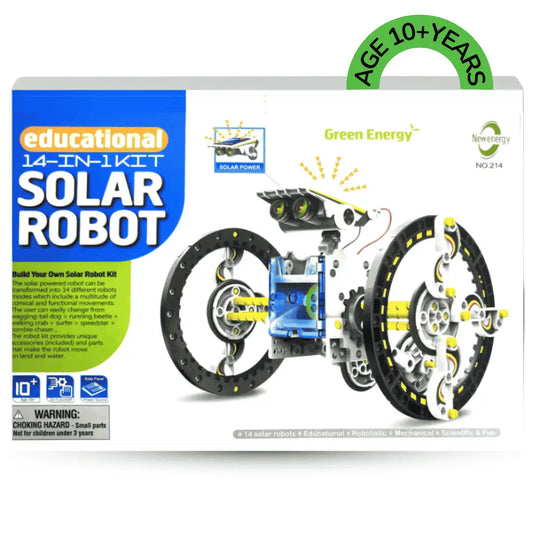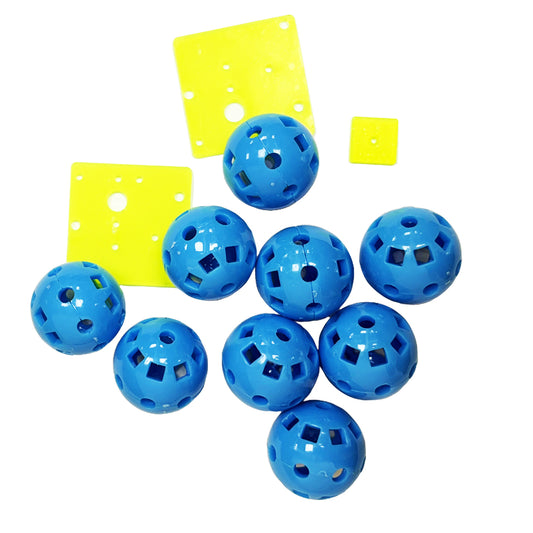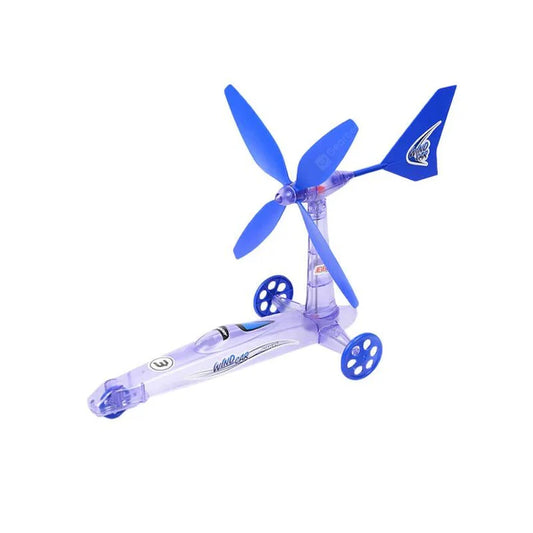
The Powerhouse of Motion: Understanding the DC Motor
IEM RoboticsThe Fundamental: Working Principle of a DC Motor
Key Components of a Simple DC Motor
Brushed DC Motor Types and Their Characteristics
The Evolution: Brushless DC (BLDC) Motors
Factors Influencing DC Motor Price
Control and Operation of the DC Motor
Applications and Speed Control of a DC Motor
Comparing Brushed vs. Brushless DC Motor Technology
The Legacy and Future of the DC Motor
The Direct Current, or DC motor, is one of the most widely used electrical machines in the world, serving as the unsung hero in countless applications, from the whirring fans in our computers to the powerful traction systems in electric vehicles. This fundamental piece of technology efficiently converts electrical energy into mechanical energy, providing the rotational force, or torque, needed to power movement. Its simplicity, reliability, and ease of speed control make it a cornerstone of modern engineering.
The Fundamental: Working Principle of a DC Motor
The operation of a DC motor is rooted in the basic laws of electromagnetism, specifically the Lorentz Force Law. This law dictates that when a current-carrying conductor is placed within a magnetic field, it experiences a mechanical force. It's this continuous force that is harnessed to produce rotational motion.
The Science Behind the Spin
The fundamental concept is elegantly simple:
Field Creation (Stator): The stationary part of the motor, called the stator, uses either permanent magnets or electromagnets (field windings) to create a fixed magnetic field. The field runs from the North Pole to the South Pole.
Current Introduction (Rotor): The rotating part, known as the rotor or armature, is a coil of wire connected to a DC power source. When current flows through the coil, it generates its own magnetic field.
Interaction and Force: The magnetic field of the rotor interacts with the fixed magnetic field of the stator. According to Fleming’s Left-Hand Rule, the current flow in the coil results in an opposing force on each side of the coil. One side is pushed up, and the other is pushed down. This opposition creates a twisting force, or torque, which causes the rotor to spin.
Continuous Rotation (Commutation): For the rotor to continue spinning in the same direction, the current in the coil must be reversed every half-turn. The commutator and brushes perform this crucial task. The commutator is a split ring attached to the rotor, and the stationary brushes connect the power source to these segments. As the rotor spins, the brushes slide from one segment to the next, continuously reversing the current in the coil just as the force would otherwise reverse, ensuring the torque always drives the motor forward. This is the entire dc motor working principle.
Key Components of a Simple DC Motor
Understanding the anatomy of the machine helps illuminate the working principle of a DC motor.
Stator (Field Poles): The non-moving outer frame that houses the permanent magnets or field windings, responsible for generating the main magnetic field. .
Armature (Rotor): The rotating assembly, consisting of a soft-iron core wrapped with insulated wire windings. This is where the electrical energy is converted into mechanical force.
Commutator: A mechanical rotary switch, typically made of copper segments, that reverses the direction of the current in the armature windings to ensure continuous, unidirectional rotation. .
Brushes: Stationary, conductive carbon blocks that maintain sliding contact with the commutator, allowing the electrical current to flow from the external power source to the rotating armature. .
Brushed DC Motor Types and Their Characteristics
The classic brushed DC motor designs are categorized by how the field windings are connected to the armature windings. This connection method fundamentally determines the speed-torque performance curve.
|
DC Motor Type |
Stator Field Connection |
Speed Regulation |
Starting Torque |
Common Applications |
|
Series-Wound |
Field in series with armature. |
Poor (Speed drops drastically with load). |
Very High. |
Traction, Cranes, Hoists (where a high starting load is needed). |
|
Shunt-Wound |
Field in parallel (shunt) with armature. |
Excellent (Nearly constant speed). |
Medium. |
Lathe Machines, Centrifugal Pumps, Fans (where speed stability is key). |
|
Compound-Wound |
Has both series and shunt windings. |
Good (Hybrid characteristics). |
High. |
Elevators, Rolling Mills, Shears. |
|
Permanent Magnet (PMDC) |
The stator uses permanent magnets. |
Good, but limited speed range. |
Medium-High. |
Small Appliances, Automotive Wipers, Toys. |
The Evolution: Brushless DC (BLDC) Motors
A major leap in DC motor technology is the Brushless DC Motor (BLDC). This design fundamentally changes the structure:
The Commutation is Electronic: It removes the physical brushes and commutator, which are sources of wear, electrical noise, and energy loss. Instead, electronic sensors (such as Hall-effect sensors) determine the rotor's position, and an electronic speed controller (ESC) electronically switches the current to the stator windings. :
Structure is Reversed: Typically, the magnets are on the rotor, and the windings are on the stator, allowing heat to dissipate more easily. :
Key Advantages of BLDC Technology
High Efficiency: No energy is lost to friction between the brushes and commutator, and the electronic commutation is highly precise.
Long Life and Low Maintenance: The absence of wearing parts means the motor can run virtually maintenance-free for its lifespan.
Less Noise and Interference: No sparking occurs, reducing electromagnetic interference (EMI) and acoustic noise.
Excellent Speed Control: The motor's speed and torque can be precisely controlled across a wide range by adjusting the electronic signal.
Due to these advantages, BLDC motors are dominating applications such as drones, electric bicycles, precision manufacturing, and high-performance pumps.
Factors Influencing DC Motor Price
The dc motor price can range significantly, determined by the components, performance requirements, and technology embedded within the motor. A clear understanding of these factors is crucial for procurement and system design.
Power Rating and Torque Requirements
Core Size: Motors with higher power ratings (HP/W) and torque requirements demand larger iron cores, more extensive copper windings, and often higher-grade magnetic steel laminations. The volume of high-quality raw materials is the primary cost driver.
Heat Dissipation: High-power motors generate more heat, requiring more robust cooling systems (e.g., cooling fins, forced air, or liquid cooling), which increases manufacturing complexity and cost.
Motor Type and Control System
Brushed vs. Brushless: As mentioned, the brushed DC motor is generally more cost-effective. The BLDC motor requires an integrated or external Electronic Speed Controller (ESC), which is essentially a sophisticated three-phase inverter. This control complexity significantly elevates the price of a dc motor.
Magnet Material: Motors using premium rare-earth magnets (Neodymium) are more expensive than those using standard ceramic (Ferrite) magnets, but they offer superior magnetic flux density for a smaller motor size.
Precision and Quality of Build
Bearings: The use of precision-grade ball bearings (especially ceramic) instead of simple sleeve bearings increases longevity and speed capability but raises the price.
IP Rating: Motors designed to operate in extreme conditions, requiring high Ingress Protection (IP) ratings (e.g., IP67 for water and dust resistance), necessitate specialized seals and housing materials, adding substantial cost.
Customization: Any requirement for custom shaft dimensions, mounting flanges, or specific winding configurations will dramatically increase the unit price due to specialized tooling and smaller batch production.
Control and Operation of the DC Motor
Controlling the speed of a DC motor is relatively straightforward, making it one of its major advantages.
Speed Control: The speed of a DC motor is directly proportional to the back-EMF and inversely proportional to the magnetic flux .
For shunt/PMDC motors, speed is typically controlled by adjusting the armature voltage via pulse-width modulation (PWM). .
For wound-field motors, speed can also be controlled by varying the Field Current (Field Flux Control). Reducing the field current weakens the flux, increasing the motor speed (above rated speed).
Applications and Speed Control of a DC Motor
The ability to easily control the speed of a DC motor is why it remains dominant in applications that require precise motion control.
Pulse Width Modulation (PWM): The most common method for controlling a DC motor speed, particularly PMDC and BLDC types. PWM rapidly switches the voltage supply ON and OFF. The speed is proportional to the duty cycle (the percentage of time the voltage is ON), enabling smooth, efficient speed variation without significant power loss.
Field Current Control (Wound Motors): In shunt and series motors, varying the field current provides an alternative way to adjust speed, often used at speeds above the motor's rated base speed.
Comparing Brushed vs. Brushless DC Motor Technology
The term DC motor encompasses a wide range of designs, but the fundamental split is between brushed and brushless variants, impacting everything from efficiency to maintenance.
Brushed DC Motor: Relies on mechanical commutation (brushes and commutator) for current reversal. They are robust, simple to control (via voltage), and have a lower initial cost. Their drawbacks are a limited lifespan and electrical noise caused by brush wear and sparking.
Brushless DC (BLDC) Motor: Eliminates the mechanical commutation system in favor of electronic control via an Electronic Speed Controller (ESC). This results in higher efficiency, virtually maintenance-free operation, and longer life, but requires complex and costly electronics. The magnets are typically on the rotor, and the windings on the stator, aiding thermal management.
The Legacy and Future of the DC Motor
Despite the dominance of AC motors in large industrial applications, the highly controllable speed and torque characteristics of the DC motor ensure its irreplaceable role in many fields. From precision robotics and servo systems that demand exact position and speed control to compact consumer electronics, the simple genius of DC motors provides a reliable and powerful solution. The ongoing innovation in BLDC technology only solidifies the future of direct current movement, promising even more efficient, reliable, and sophisticated motion control across all sectors. .








